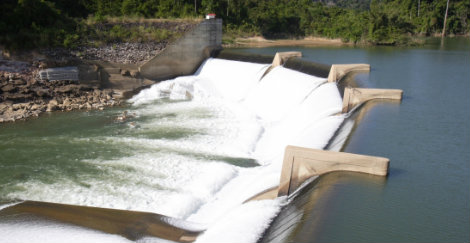Most viewed
- About NAU energy research
- Bicycle generator project
- 2015 Arizona wind & solar status report
- Education
- Energy experts
- Energy research
- Four Corners Wind Resource Center
- 2013 Arizona wind & solar status report
- Interactive Arizona wind map
Recent reports
- 2015 Arizona wind & solar status report
- 2013 Arizona wind & solar status report
- "The Future of Electricity: Embracing Transition"
- Prescott Airport solar facility & variability study
- Integration of Wind and Hydropower Systems: Issues, Impacts and Economics. Vol. 1
- Integration of Wind and Hydropower Systems: Case Studies. Vol. 2
Hydropower
U.S. Department of Energy Water Power Vision Report Accordion Closed
NAU researchers are leading a chapter on transmission and grid integration for the U.S. Department of Energy’s Water Power Vision Report. Researchers are supporting the National Renewable Energy Laboratory (NREL) in the development of a strategic vision for the future use of hydroelectric and other water power in the United States. Researchers are investigating transmission, distribution and grid stability of water-based electricity generation from hydropower, pumped-storage hydropower, and marine and hydrokinetic energy. This work examines the benefits associated with energy storage, dispatchable energy, and ancillary services available from these water-based resources, for the integration of other variable renewable generation sources on the grid. Understanding the potential increased use of water power sources in the U.S. contributes to a national vision of clean energy and the ability for hydro power to balance the variability of other renewable sources.
IEA Task 24: Integration of wind & hydro systems Accordion Closed
Dr. Tom Acker led an international team in a four-year effort involving seven member countries and thirteen participating organizations for the International Energy Agency’s Task 24: Integration of wind and hydro systems research project.
The project goals were to:
- Establish an international forum for exchange of knowledge, ideas, and experiences related to the integration of wind and hydropower technologies within electricity supply systems
- As it pertains to wind and hydropower integration, share information among participating members concerning grid integration, transmission issues, hydrological and hydropower impacts, markets and economics, and simplified modeling techniques
- Worldwide, through information sharing and exchange of ideas, identify technically and economically feasible system configurations for integrating wind and hydropower, including the effects of market structure on wind-hydro system economics with the intention of identifying the most effective market structures
- Document case studies pertaining to wind and hydropower integration, and create an on-line library of reports
Results were written up as two reports. The first report describes the background, concepts, issues, and conclusions related to the feasibility of integrating wind and hydropower, as investigated by the members of IEA Wind Task 24. The second report describes the study methodologies and participant case studies.
Hydro integration in the Western Wind and Solar Integration Study Accordion Closed
NAU graduate students and faculty worked on several aspects of the Western Wind and Solar Integration Study, including the considerations for hydroelectric power integration with high levels of renewable energy across the west. In collaboration with NREL and GE, researchers examined the accuracy of hydro modeling in the WWSIS study, looked at the impacts of high-level renewable energy generation on hydro power scheduling and operation, and examined the value of hydro power for integration of renewables from a number of angles.
Wave energy modeling Accordion Closed
Stephen Kuluris, an NAU senior, is currently researching wave energy device modeling with the National Renewable Energy Laboratory. He spent summer 2014 in the lab and is writing an honors thesis on his findings. Stephen became interested in this project after completing an undergraduate honors project and internship that focused on similar topics. The emerging area of wave energy device modeling helps researchers to understand the potential challenges in pursuing commercialization of wave energy harnessing devices. This modeling also results in a baseline of knowledge and data that researchers can provide to industries considering the use of wave energy.
Solar desalination Accordion Closed
The Bureau of Reclamation has installed a pilot solar desalination project near Leupp, Arizona. Northern Arizona University and University of Arizona researchers have been invited to perform a techno-economic analysis of the project. This analysis will likely result in an optimization of the desalination project. Once the economic and technological viability of solar desalination is understood, the project can be more easily replicated and improved.
